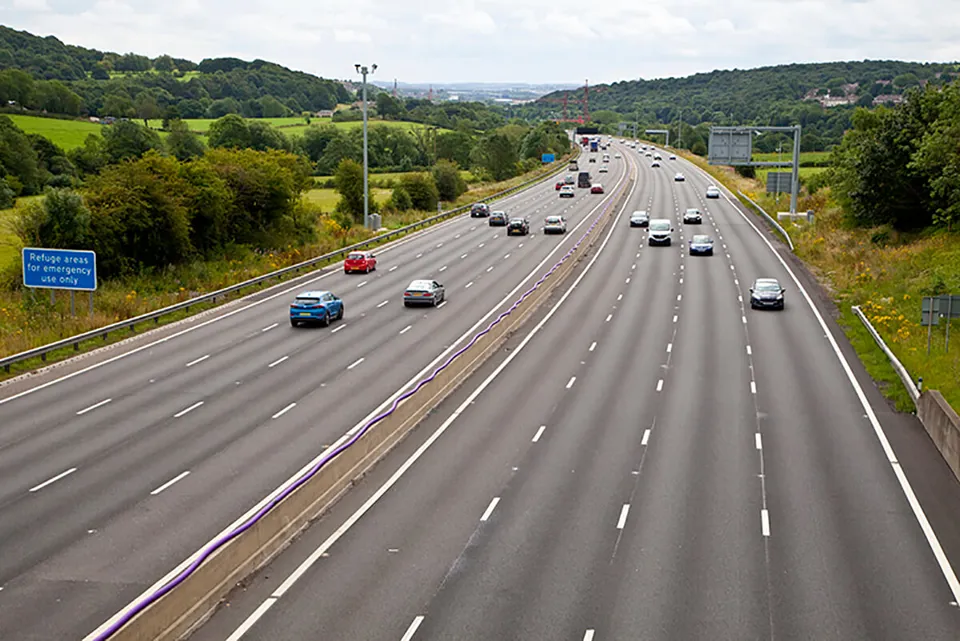Highways England and Loughborough University are launching a new £1 million project to understand the challenges connected and autonomous vehicles (CAVs) could face on motorways.
Roadworks and lane markings will be included in the assessment to see whether existing road infrastructure, which was designed for conventional vehicles, is ready for the safe and efficient operations of CAVs.
Professor of Intelligent Transport Systems, Mohammed Quddus, the principal investigator on the project, said: “To date there is significant investment and advancement in Connected and Autonomous Vehicles.
“It is, however, not known whether existing road infrastructure, which was designed for conventional vehicles, is ready for the safe and efficient operations of CAVs.”
The project – Connected and Autonomous Vehicles: Infrastructure Appraisal Readiness (CAVIAR) – also involves construction company, Galliford Try.
It was announced as a winner in Highways England’s innovation and air quality competition last year, receiving the £1m grant from the Government company’s innovation and modernisation designated fund.
Professor Quddus continued: “Although CAVs are designed with existing infrastructure in mind, ensuring they are safe to operate on motorways will require evaluating how road layouts affects their operational boundaries such as their ability to sense lanes and make appropriate decisions.”
This new project comes as a new report says self-driving vehicles may not offer the safety improvements often touted.
A study released in America last month by the Insurance Institute of Highway Safety (IIHS), found the perceived safety benefits of autonomous vehicles could be significantly lower than commonly believed by the wider CAV sector.
It claimed self-driving vehicles might prevent only one-third of crashes if automated systems drive too much like people - read more in the June digital edition of Fleet News.
CAVIAR will examine whether self-driving vehicles can safely navigate through roadworks.Real-world data from different lane configurations will be collected and fed into the simulation models to calibrate and examine how CAVs respond to dynamic lane changes.
Digital maps representing dynamic lane configurations will be transmitted to CAVs in advance for informed routing decisions.
In terms of lane markings, the platform will be utilised to understand how environmental conditions affect a CAVs ability to detect lane markings, such as snow, and low lighting – for example at night.
For merging and diverging scenarios, inconsistencies in geometric configurations will be appraised to examine whether CAVs are able to merge safely from the local road network (low speed) to the motorway network (high speed).
Loughborough University will lead the work on the development and validation of the simulation platform.
John Mathewson, senior ITS advisor at Highways England, said: “Our fund is all about stimulating innovation and supporting research and trials to ensure the UK remains ready to adopt cutting edge technology.
“This research will build on our understanding and give us further insight into how connected and autonomous vehicles would operate on England’s motorways and major A roads and what challenges they may face.
“It is a great example of partnership working between academia and industry. The results could help us shape how we invest in future road design and maintenance.”




















Login to comment
Comments
No comments have been made yet.